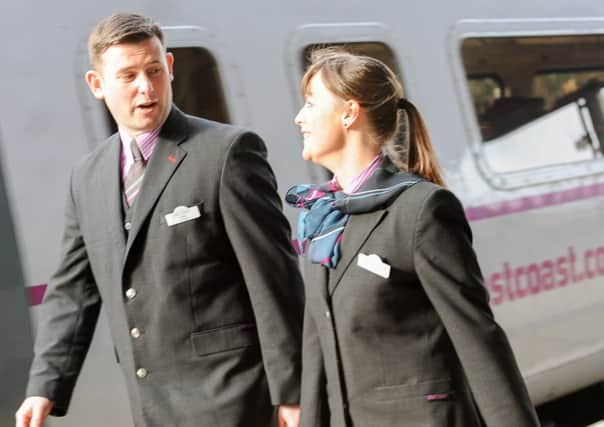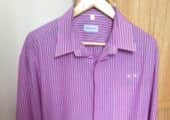East Coast train staff hit out at shiny uniforms


The staff attire introduced by the cross-Border train operator in January includes a striped purple shirt which, a union said, reflected light onto cab instruments.
Anti-glare film has been added to the gauges, but Aslef, the main drivers’ union, said it had not solved the problem. It has forced at least one East Coast driver to stop his train.
Advertisement
Hide AdAdvertisement
Hide AdUnion leaders have now raised their concerns with UK Government-run East Coast “at the highest level” and alerted the Office of Rail Regulation (ORR), which is responsible for safety.


The trains travel on the east coast main line between Scotland and London at speeds of up to 125mph.
The row comes four years after East Coast’s predecessor, National Express, was forced to scrap new blouses after female staff refused to wear them, complaining they were see-through.
Aslef told the ORR over the glare problem: “During blue sky and direct sunlight conditions, the new-issue uniform shirt reflects onto driving cab instrument gauges, especially the speedometer, resulting in the driver being unable to read it. This can last for anything from 30 seconds to 15 minutes or more, depending on sunlight conditions.
“The shirt was part of the new uniform issued in January. It was not trialled at any time by drivers before issue.”
Aslef said after meeting East Coast in February it had agreed to a trial of anti-reflection film placed over the cab instruments.
However, the union said: “The trial seemed OK, but was not carried out in the correct sunlight conditions. Since the trial, we have had several reports from drivers of the same sunlight problems with the anti-glare film fitted.”
Aslef said it had then asked for the shirts to be withdrawn, but the company had refused “and offered no other solution”.
Advertisement
Hide AdAdvertisement
Hide AdIt said: “The company council and the Aslef full-time officer have raised this matter at the highest level within East Coast.
“The safety reps at all locations have written to the ORR after their management have failed to deal with the matter.”
An industry source told Scotland on Sunday: “The drivers are really worried about this and think their management are not taking it seriously.
“It led to a discipline case in Newcastle where a driver stopped the train and took a picture of the speedo. East Coast then disciplined the driver for using his mobile phone.”
A spokeswoman for the ORR said: “We are aware of this and are looking into it.”
An East Coast spokesman said: “We are aware of the concerns raised and we are working with drivers to resolve the issue. Although our investigations show the shirts pose no risk, we have fitted a non-reflective film to all our drivers’ cabs in our fleet.”
The spokesman said staff had been consulted before the introduction of the uniforms.
He said no trains had been delayed or halted because of glare on the control panels.
Advertisement
Hide AdAdvertisement
Hide AdHe added: “Drivers are not permitted to use their mobile phones in the cab. Any unauthorised use of a mobile phone is an internal matter.”
In 2009, the Transport Salaried Staffs Association said National Express’s new blouses were “too thin and too cheap”, and “yet another example of cutting costs at every corner”.
The Rail Maritime and Transport Union described the garments as “most decidedly inappropriate”.
The TSSA also criticised the company for refusing to provide the uniform’s shoes in half sizes.
The company said other versions of the blouse had been rejected by staff for being too warm or heavy, but agreed to change the fabric.